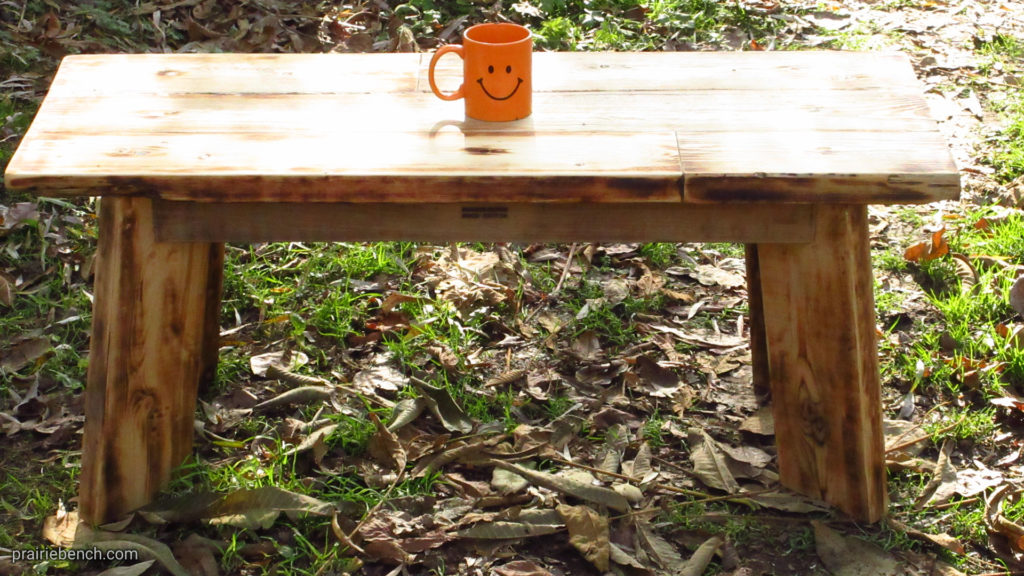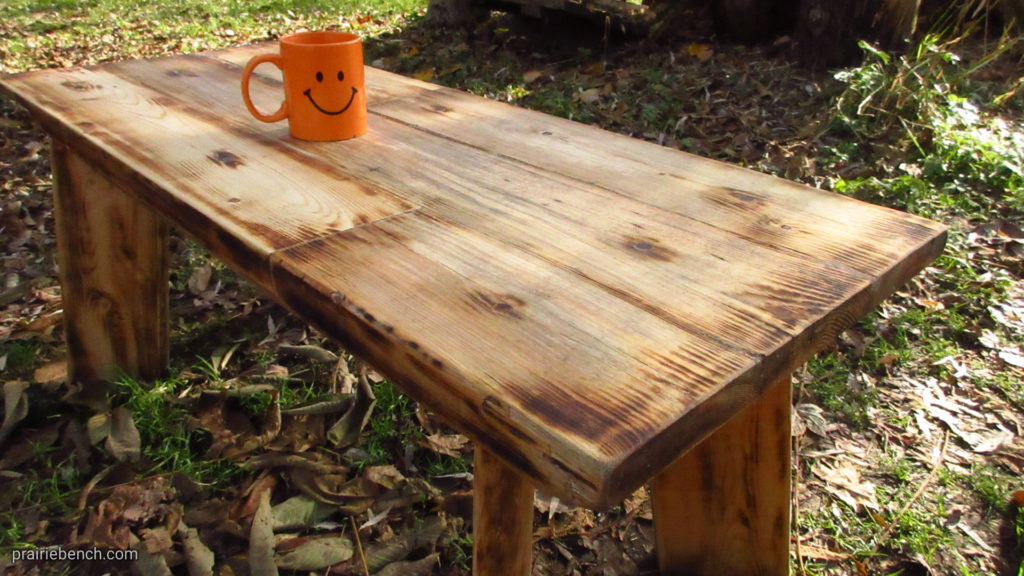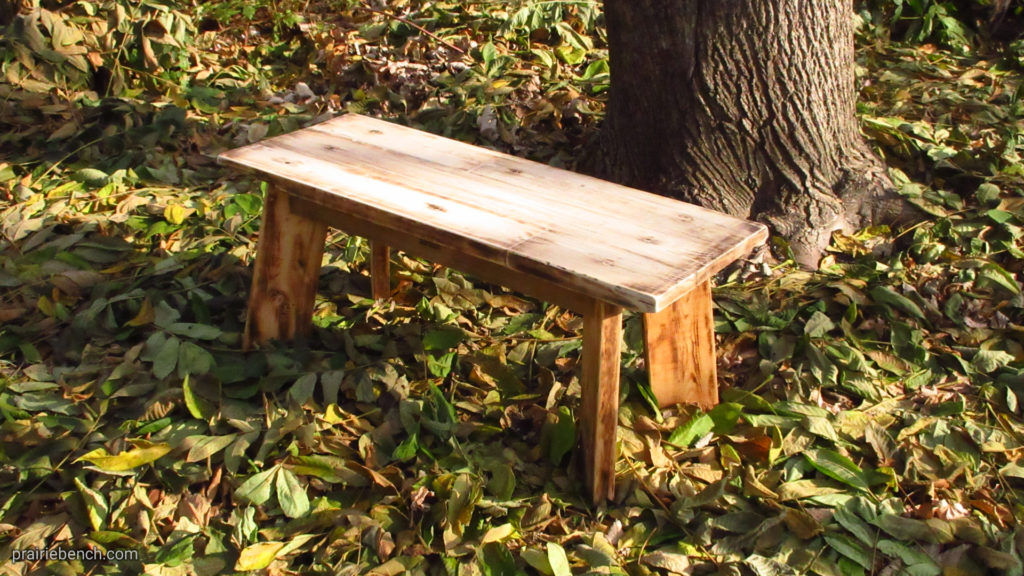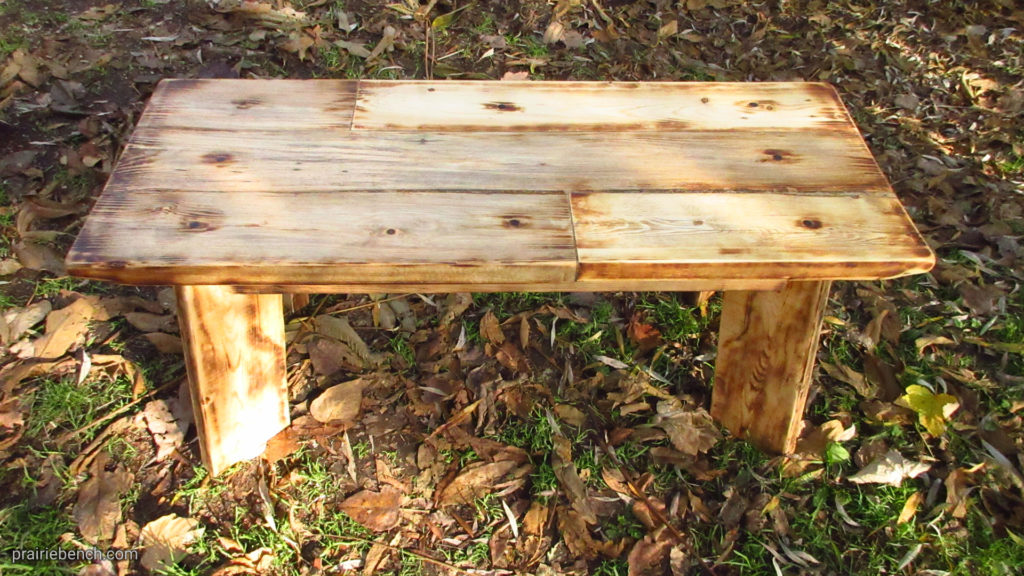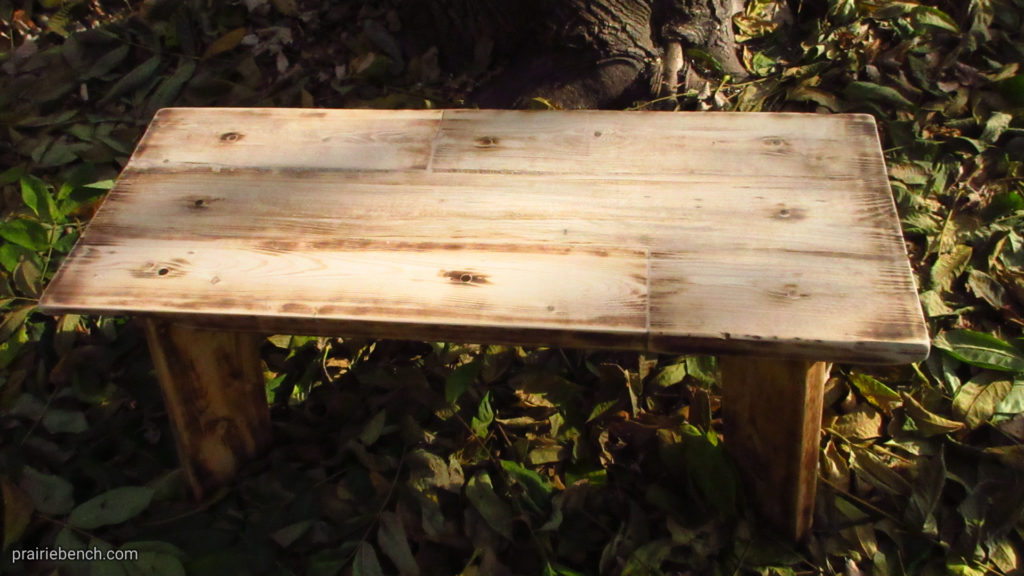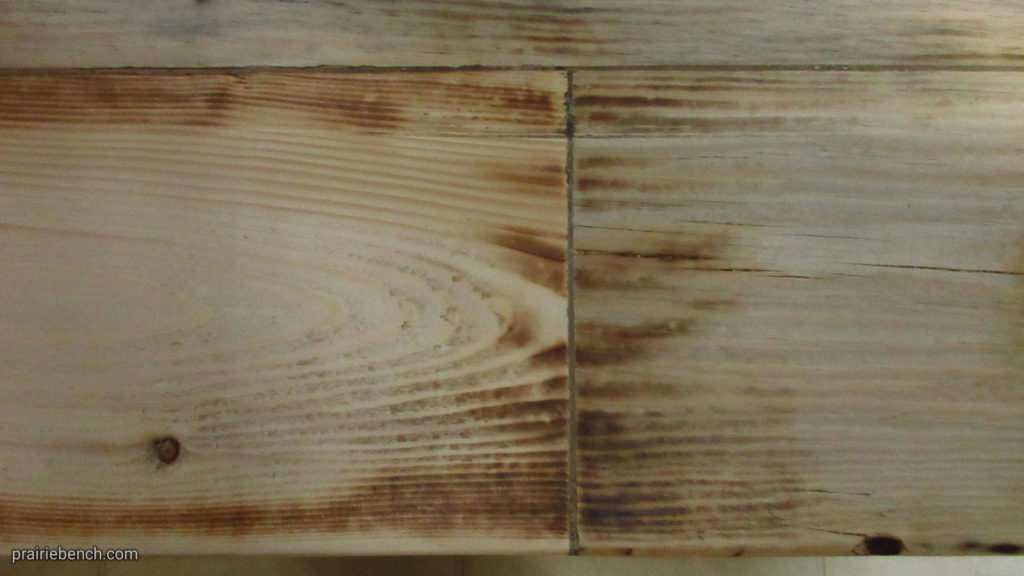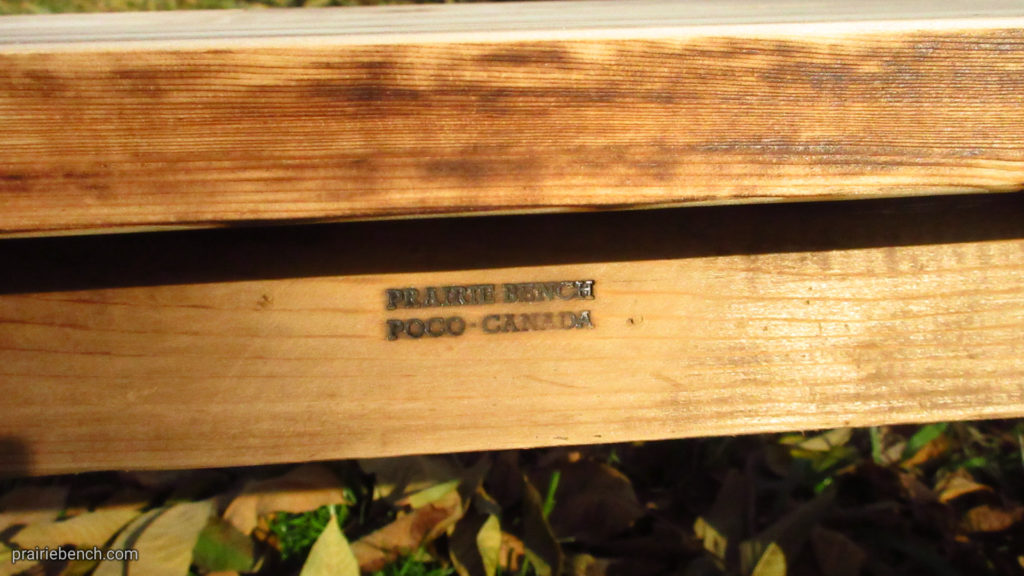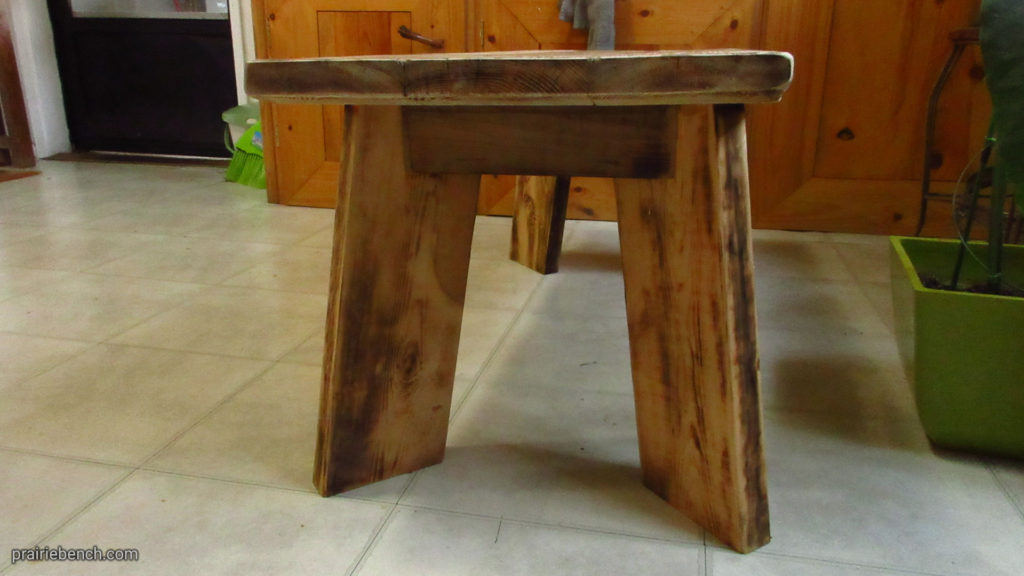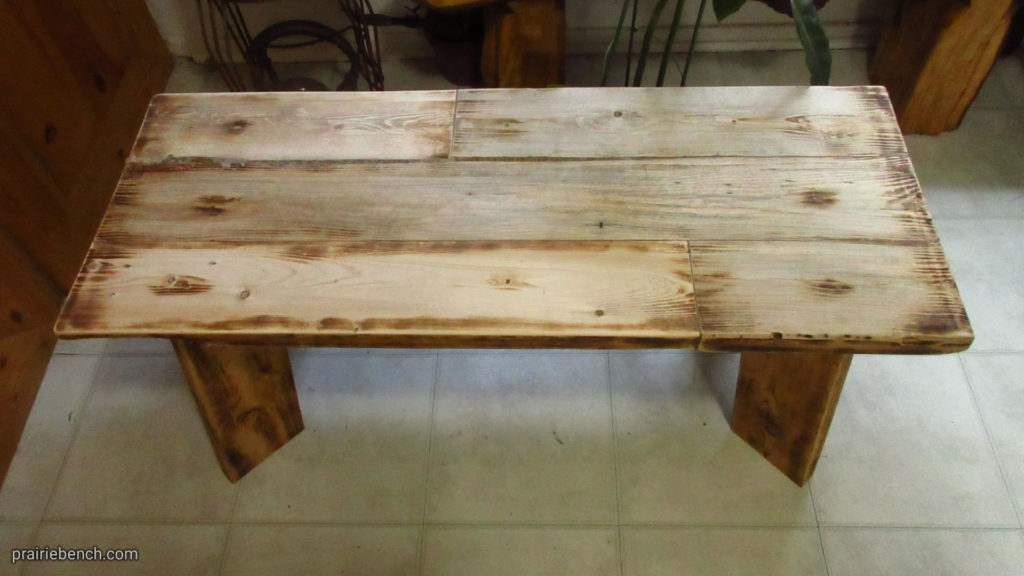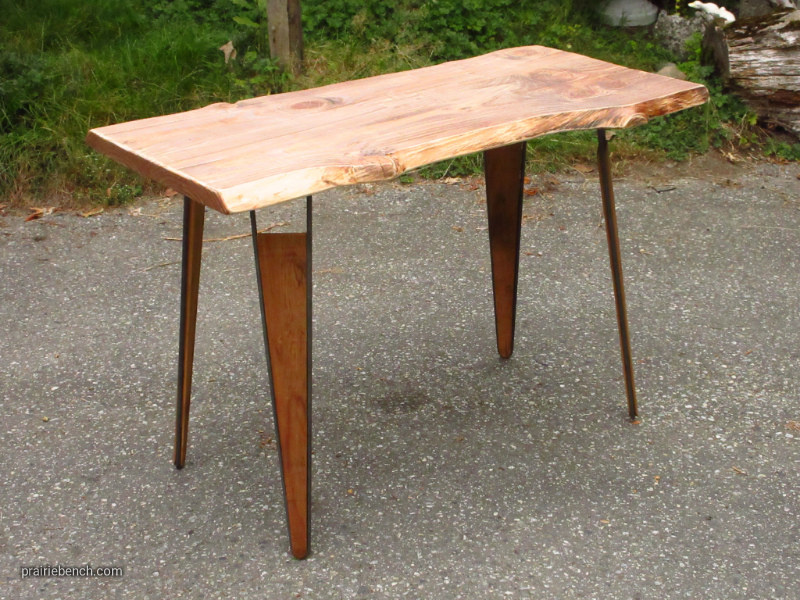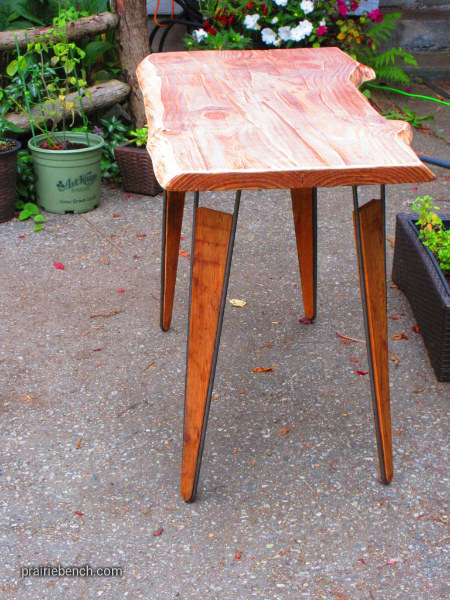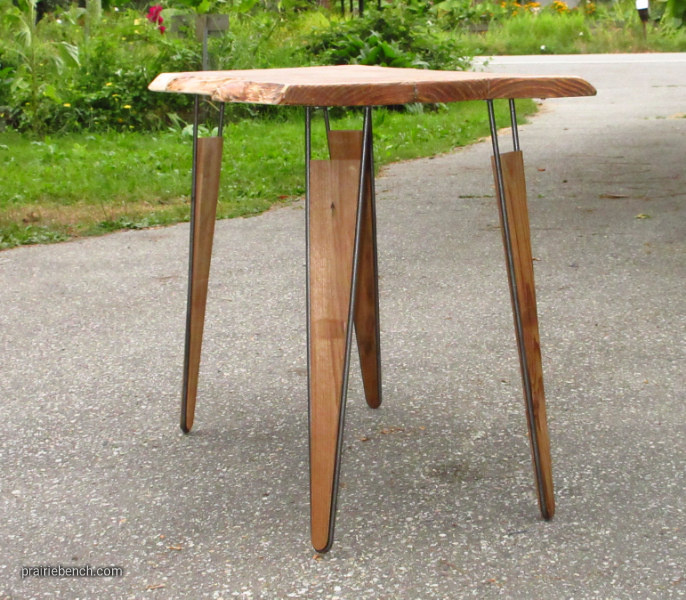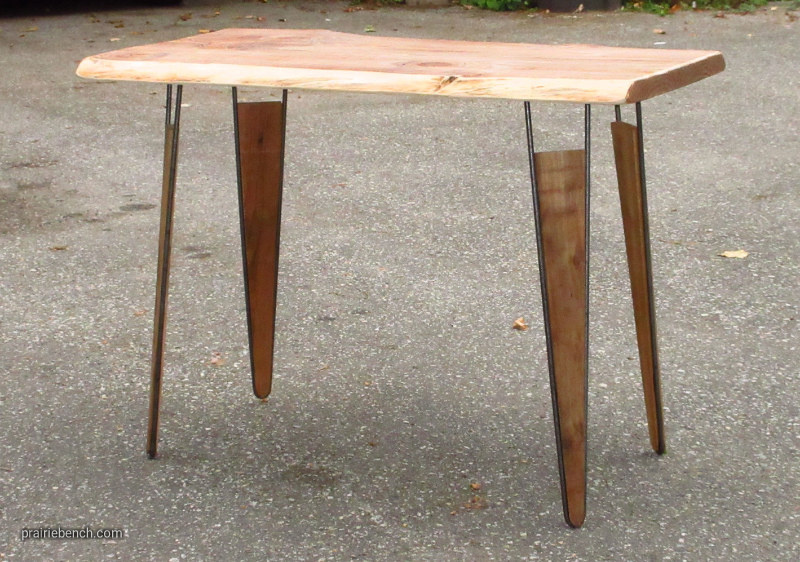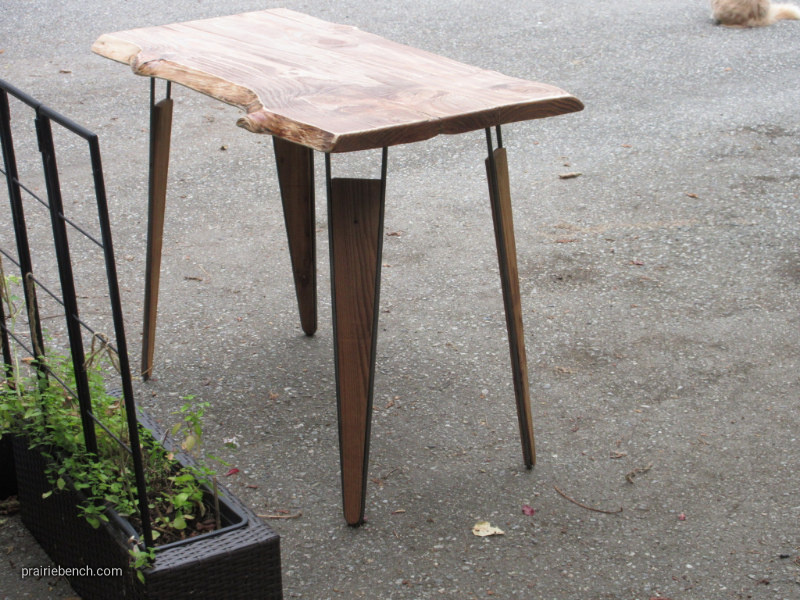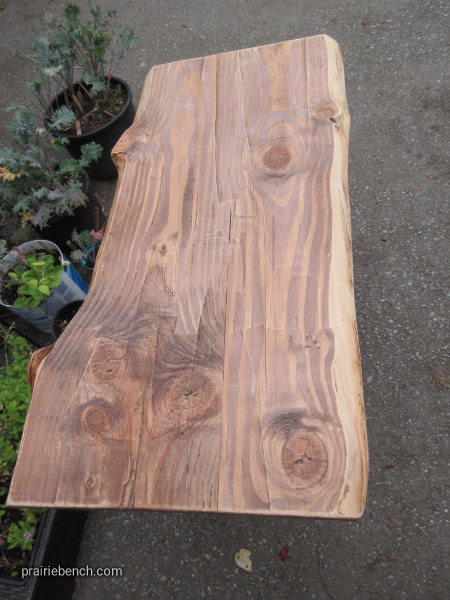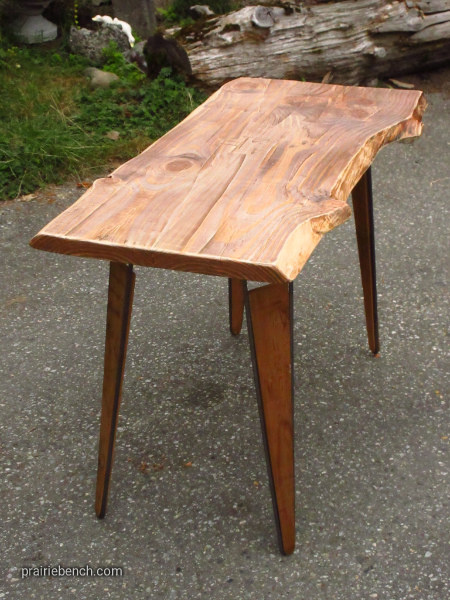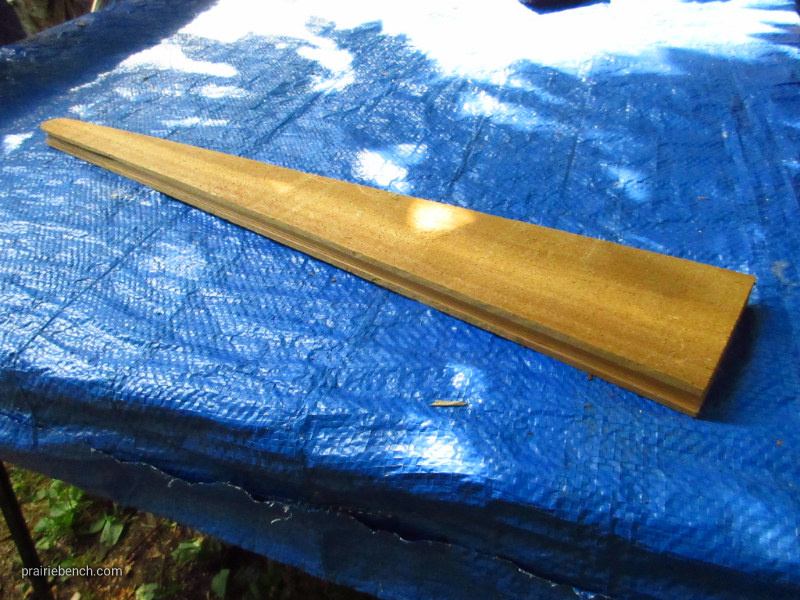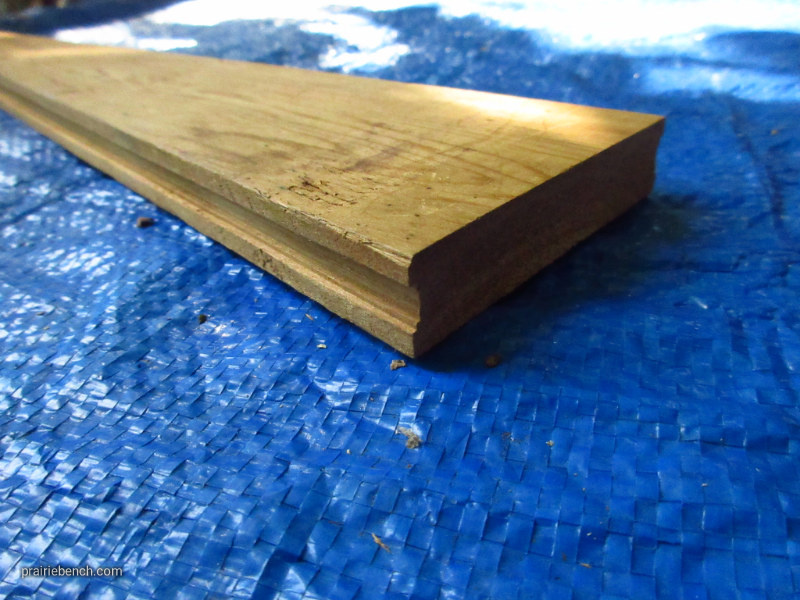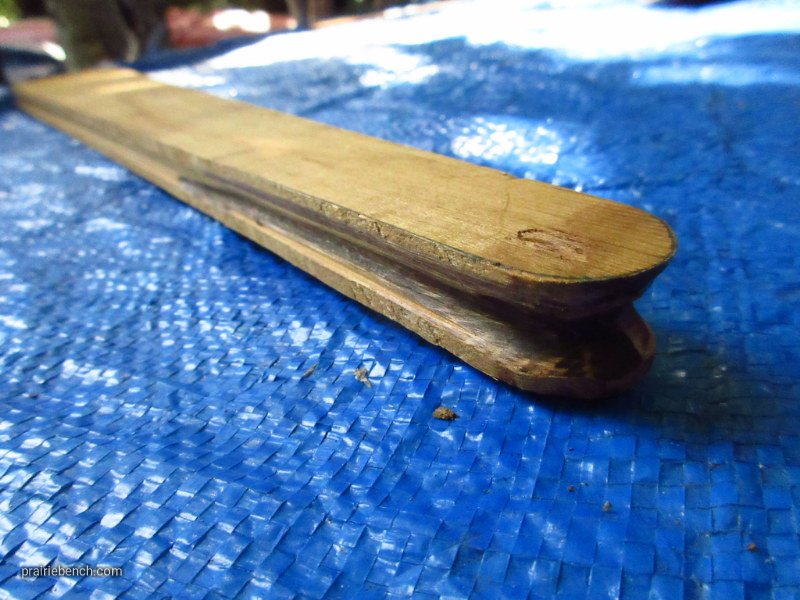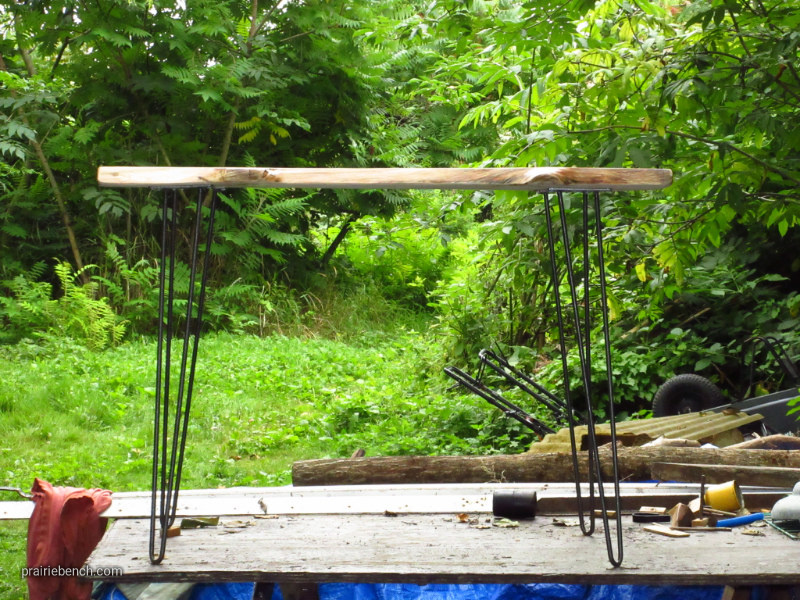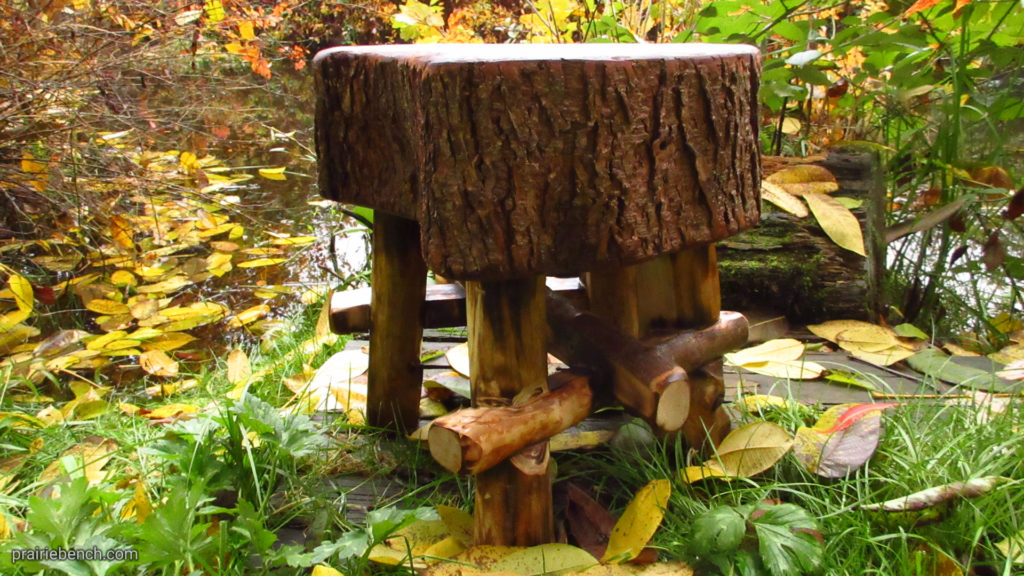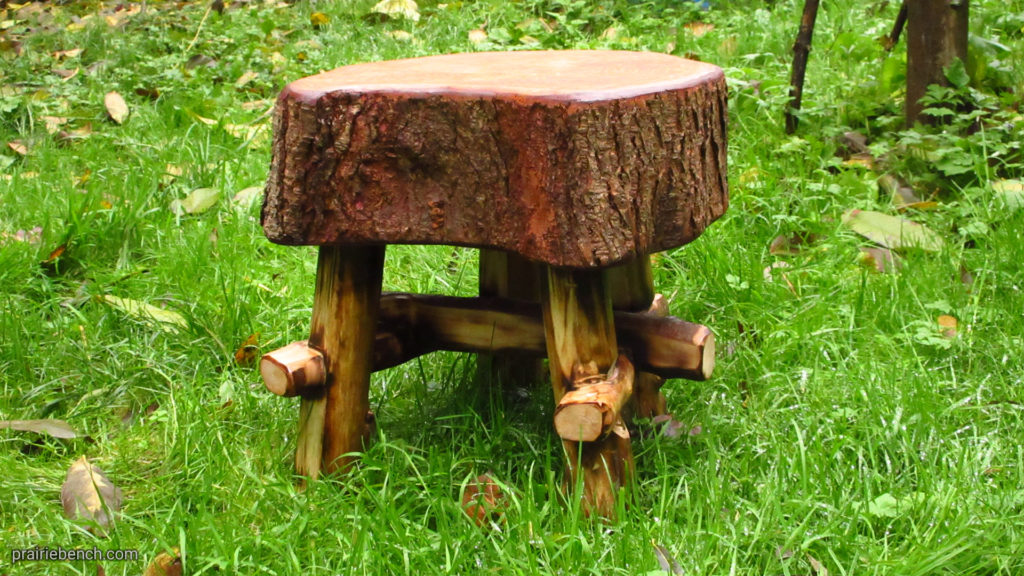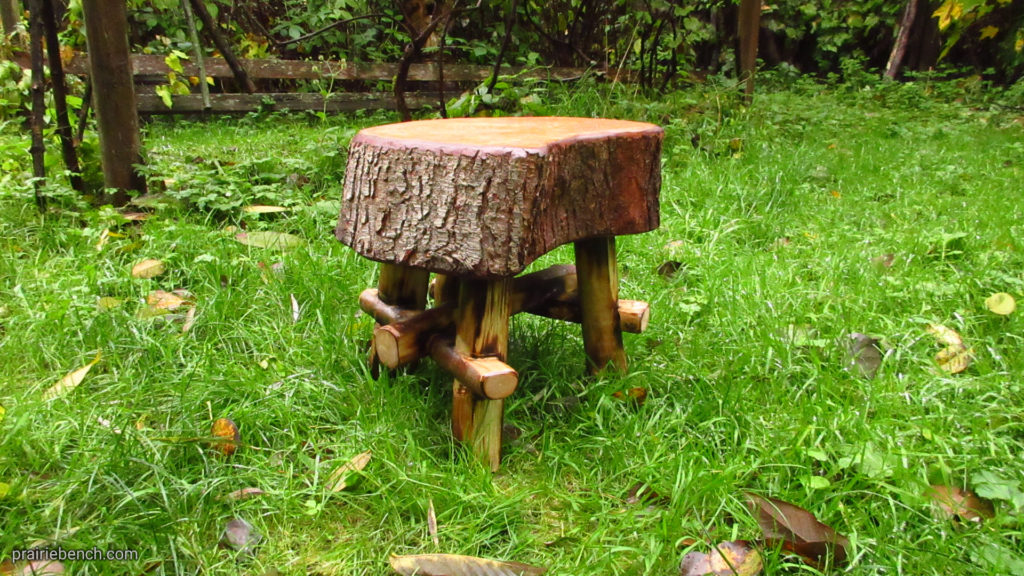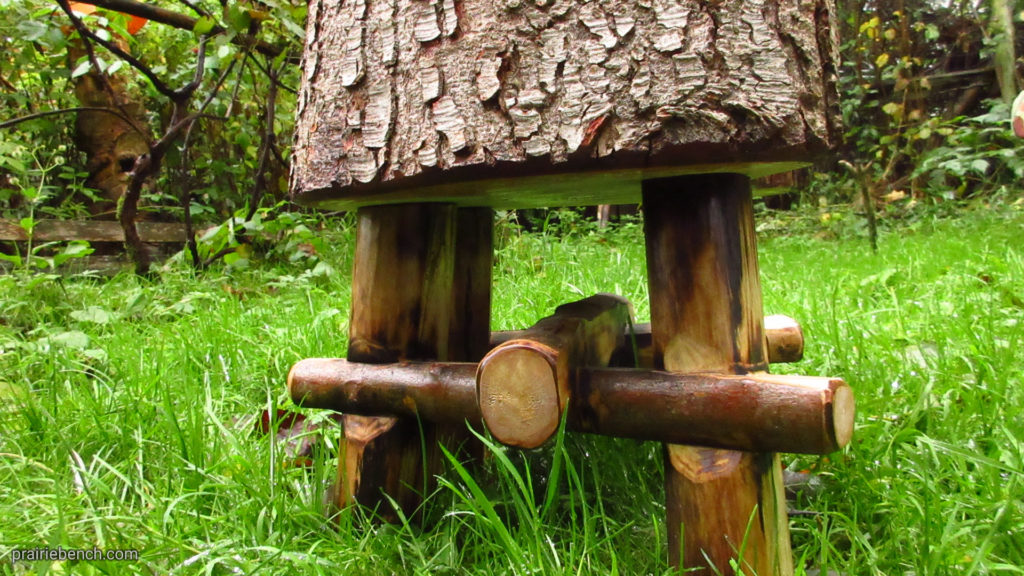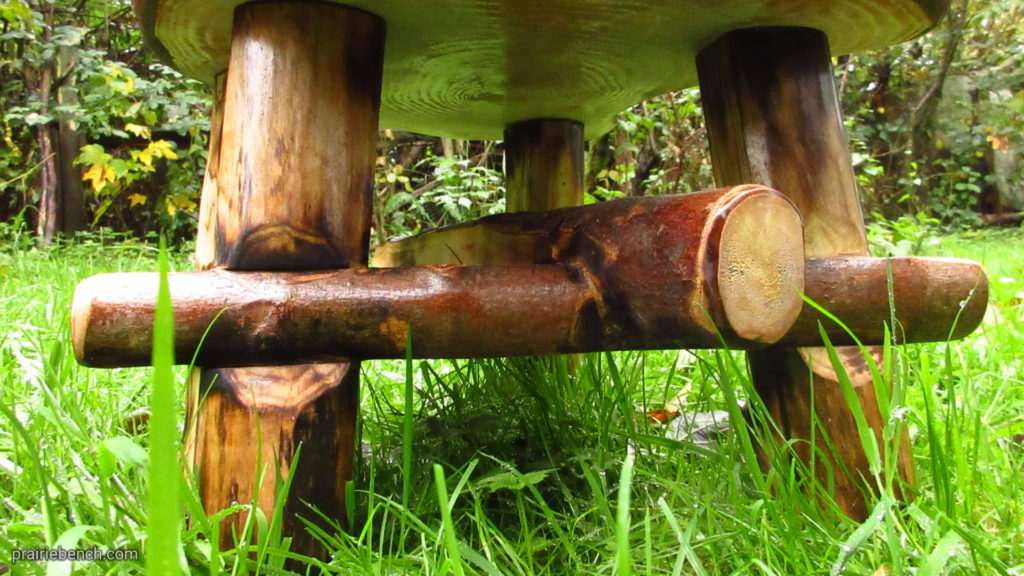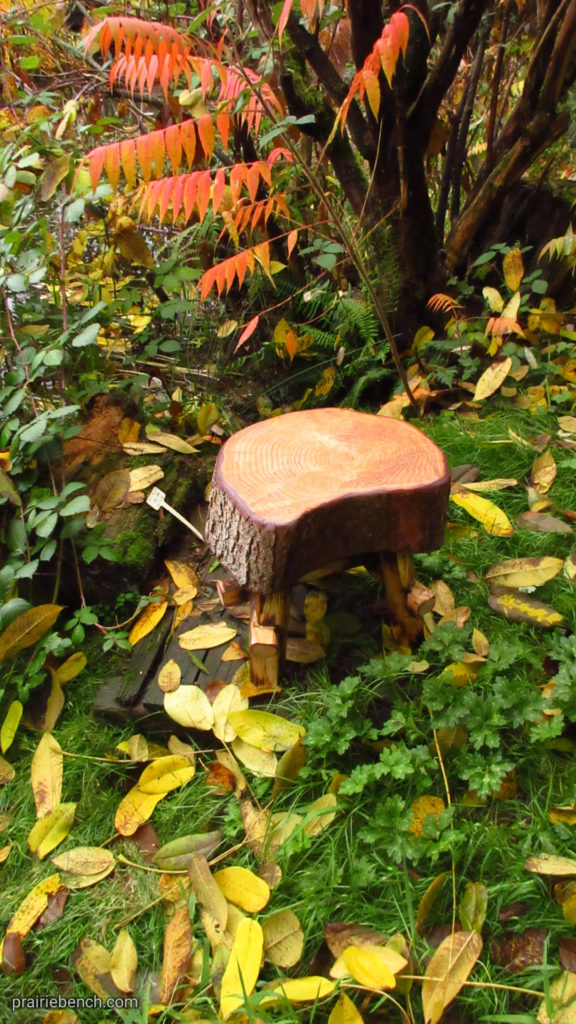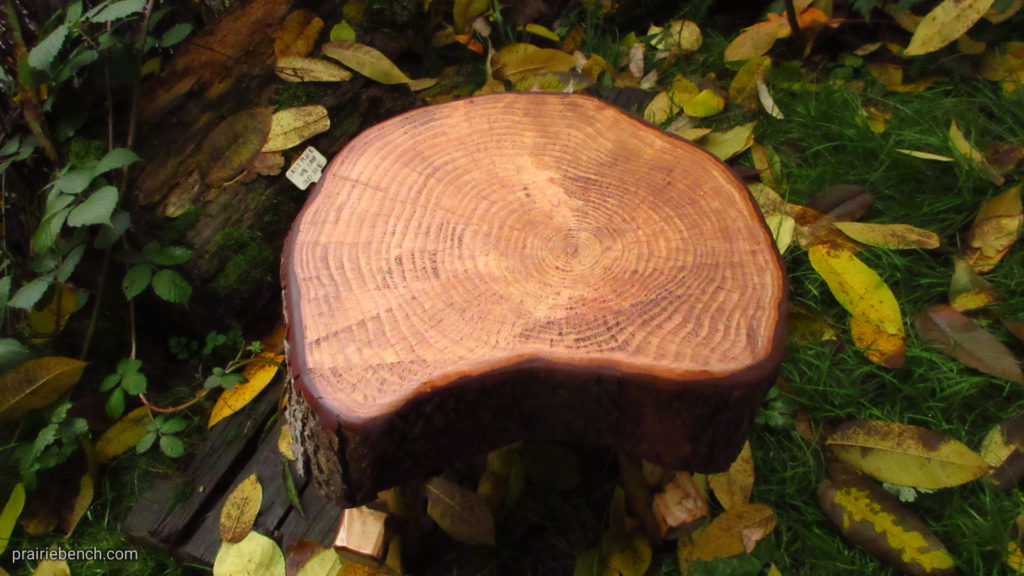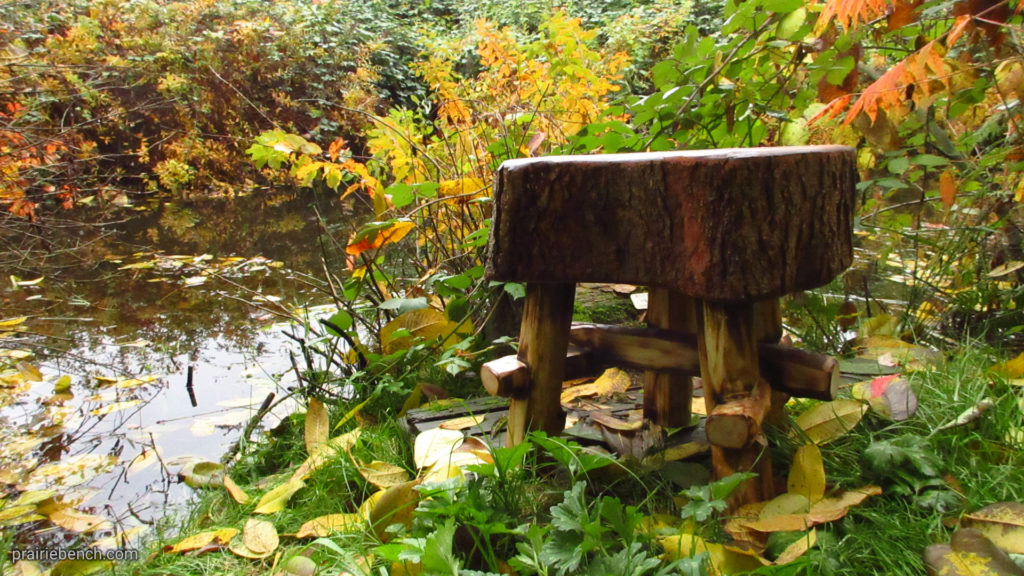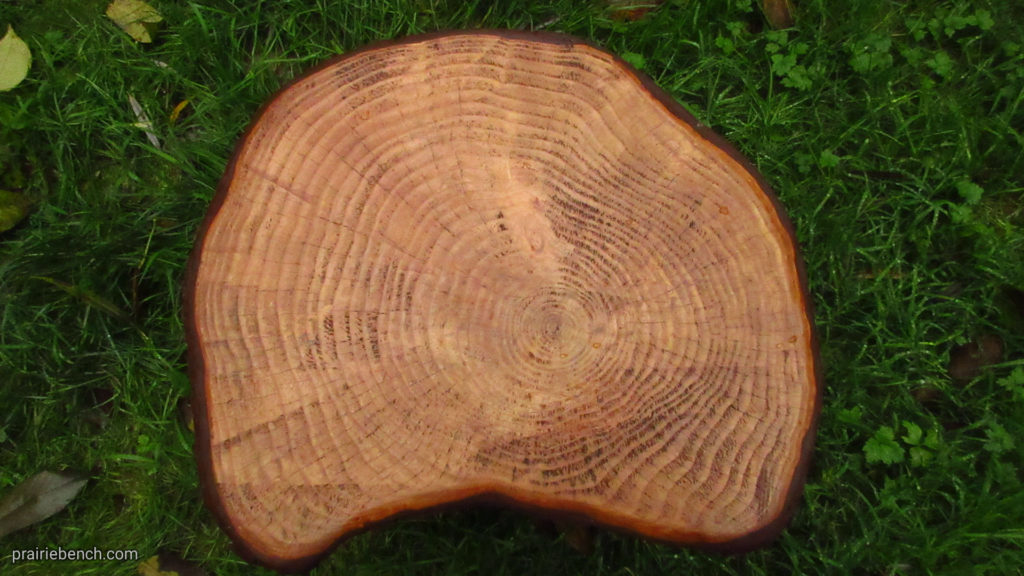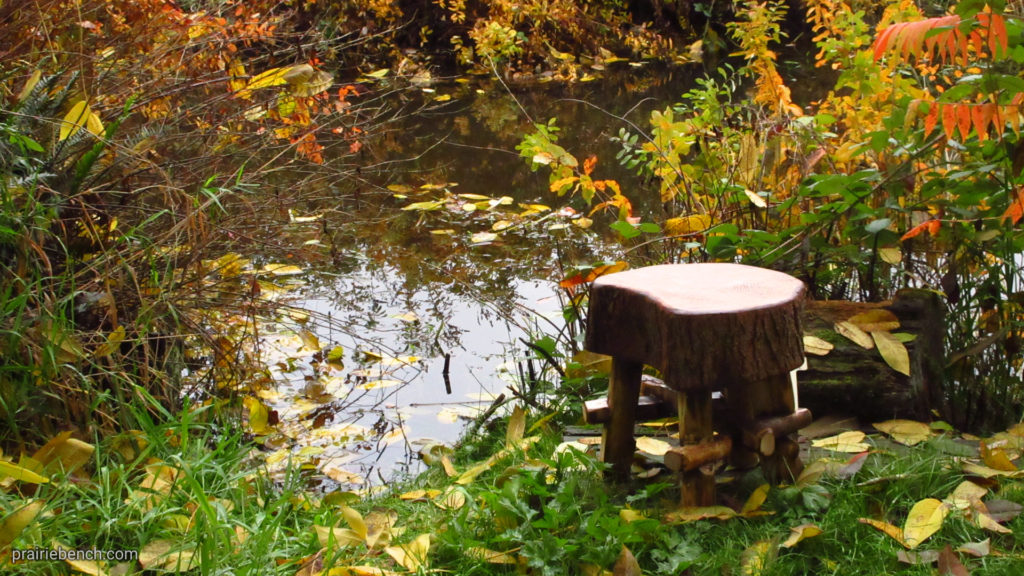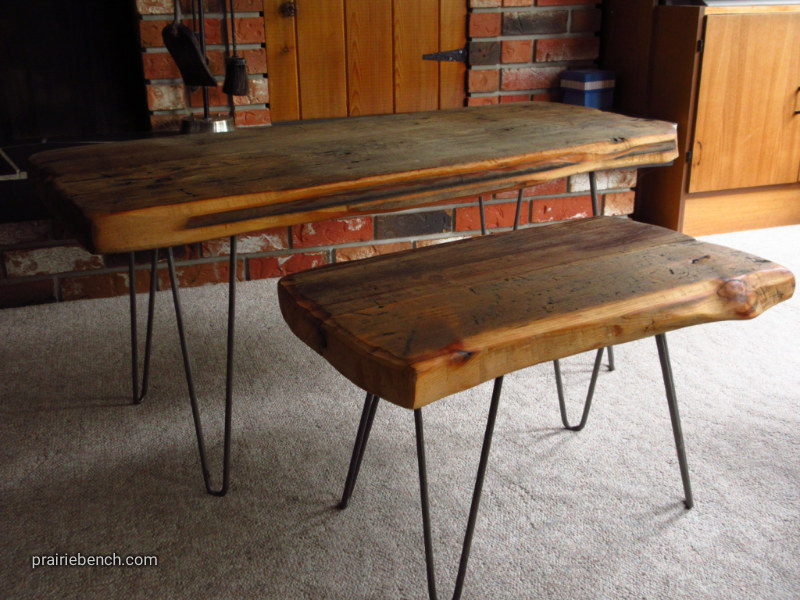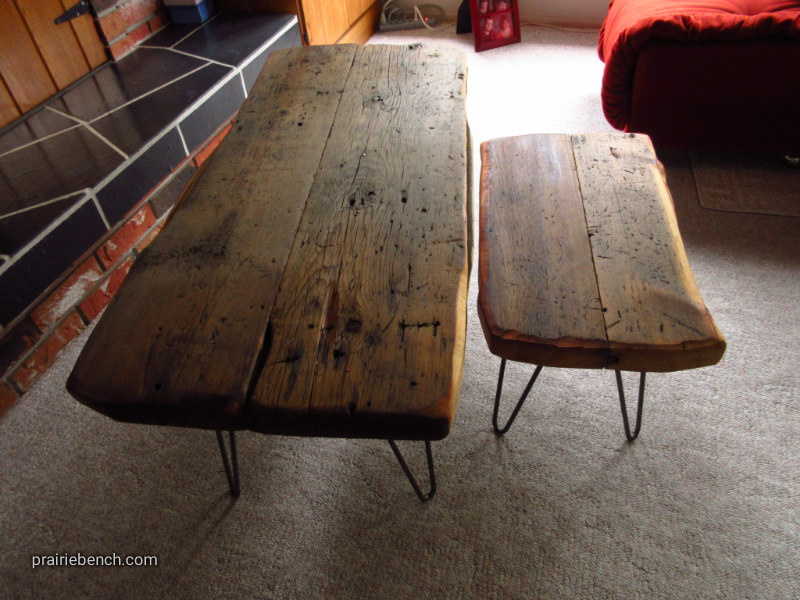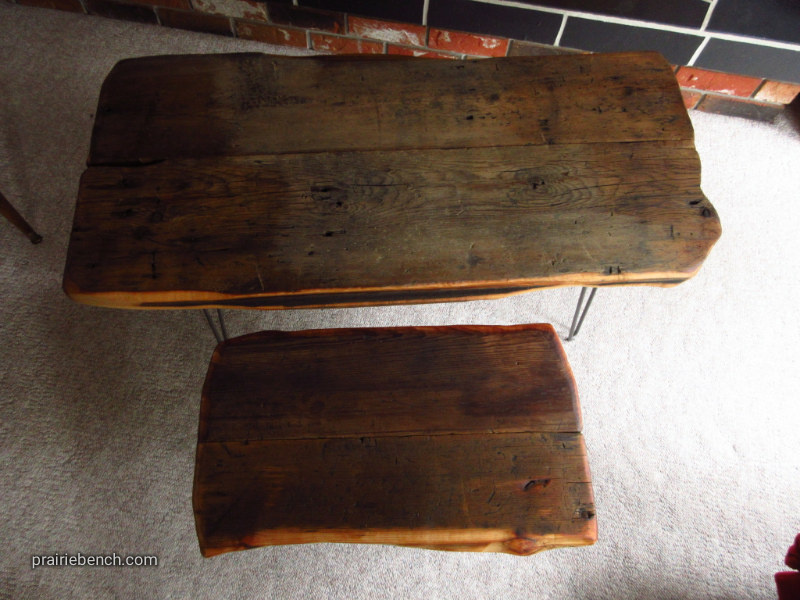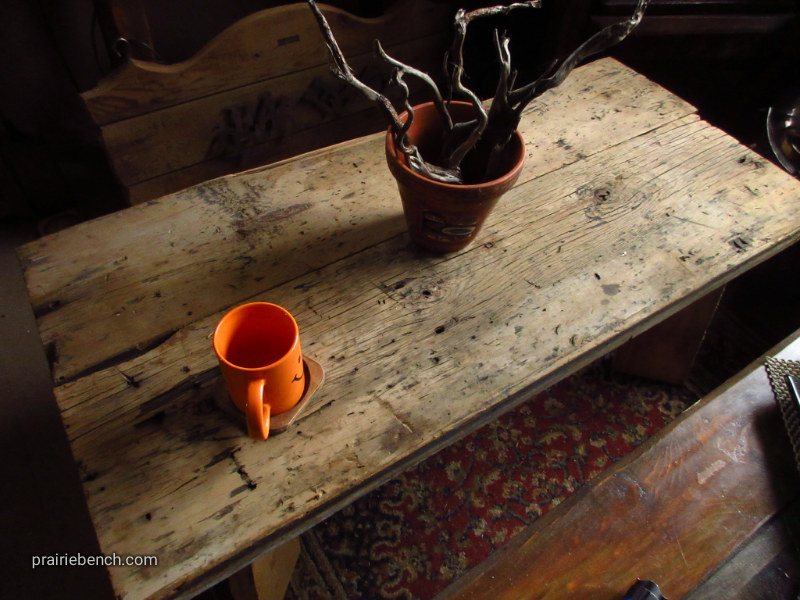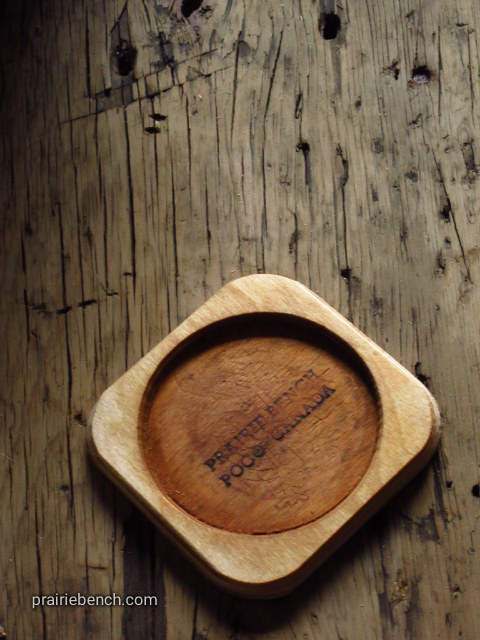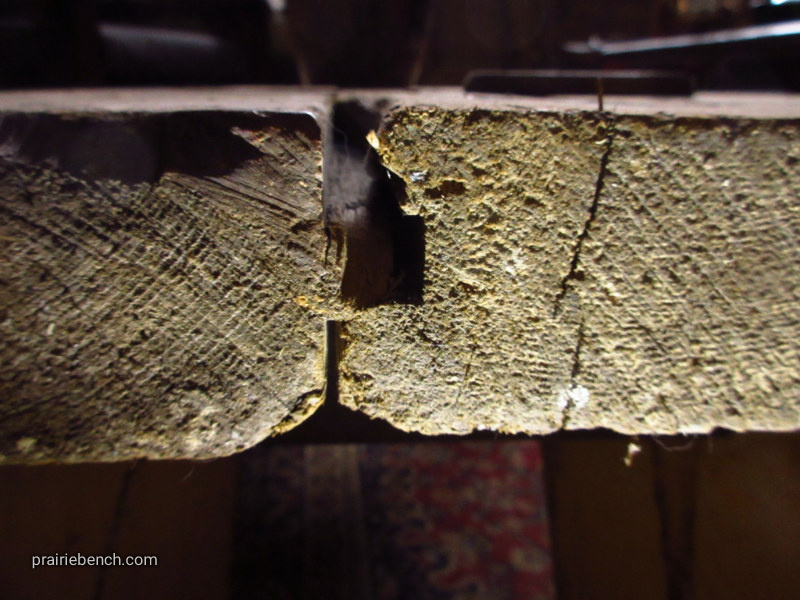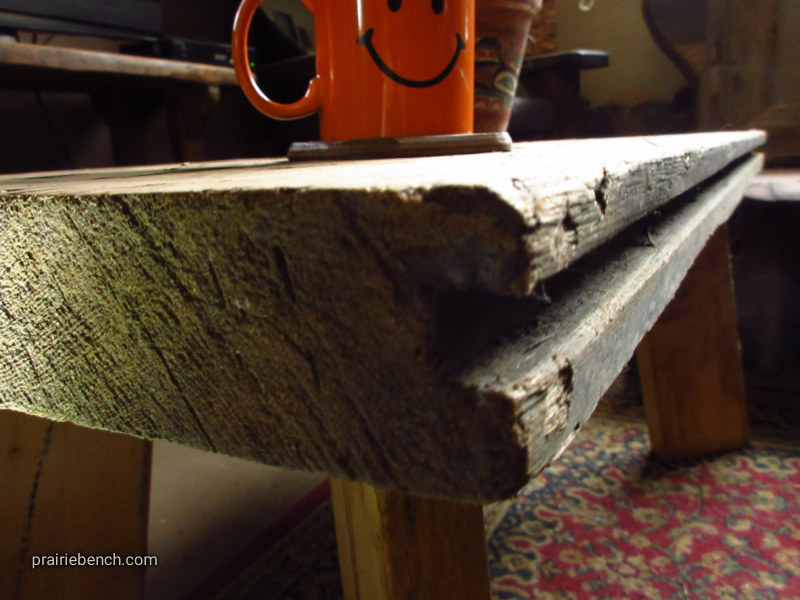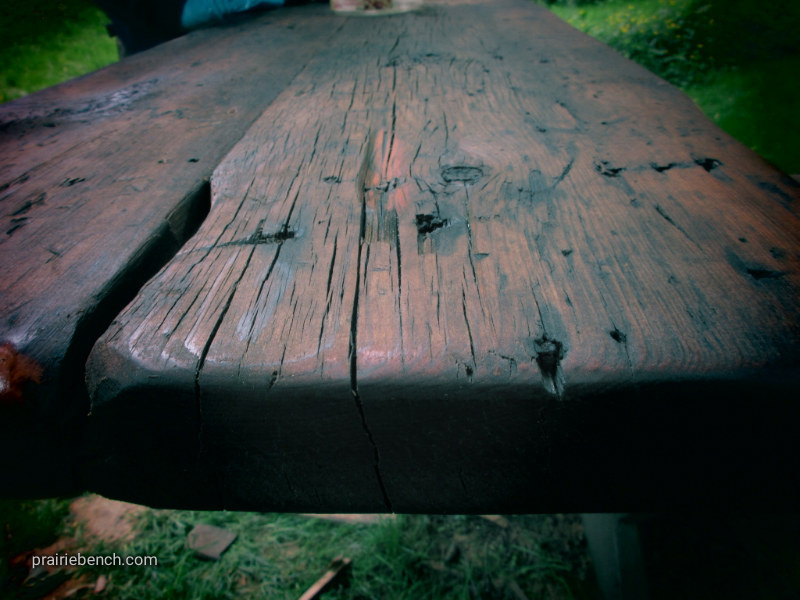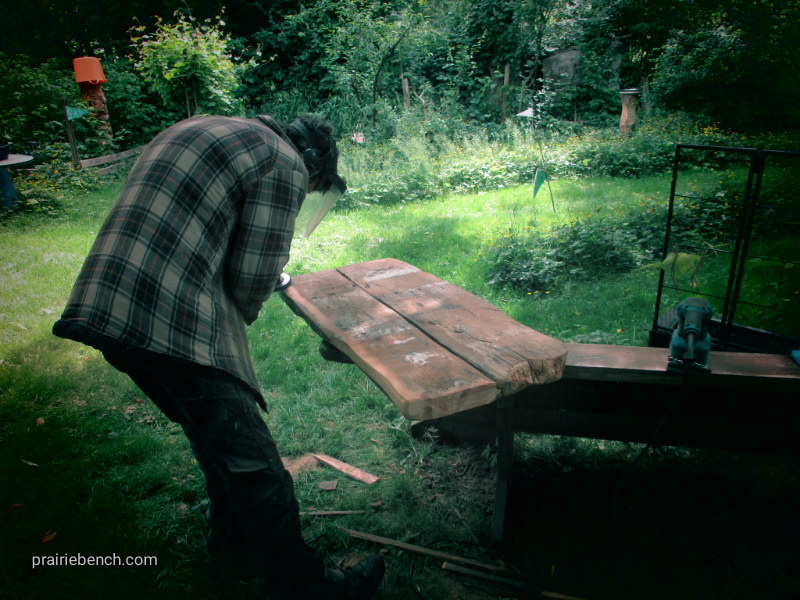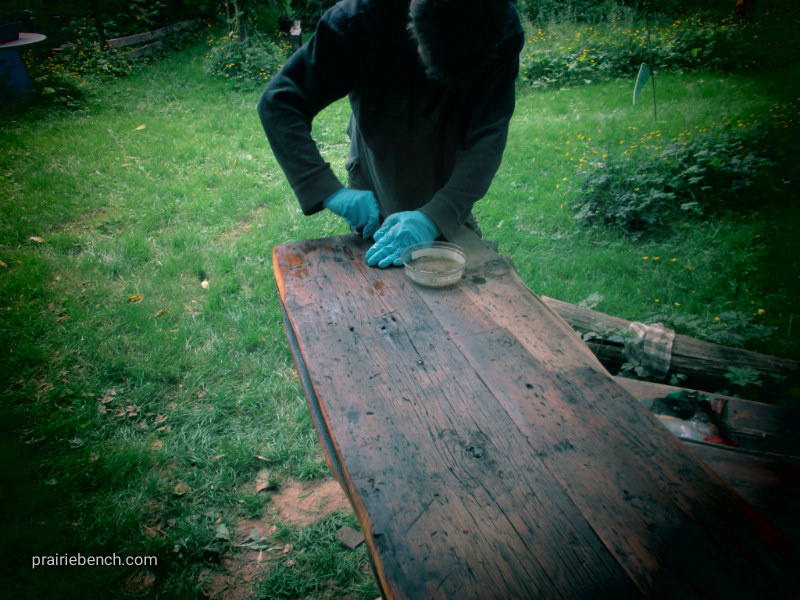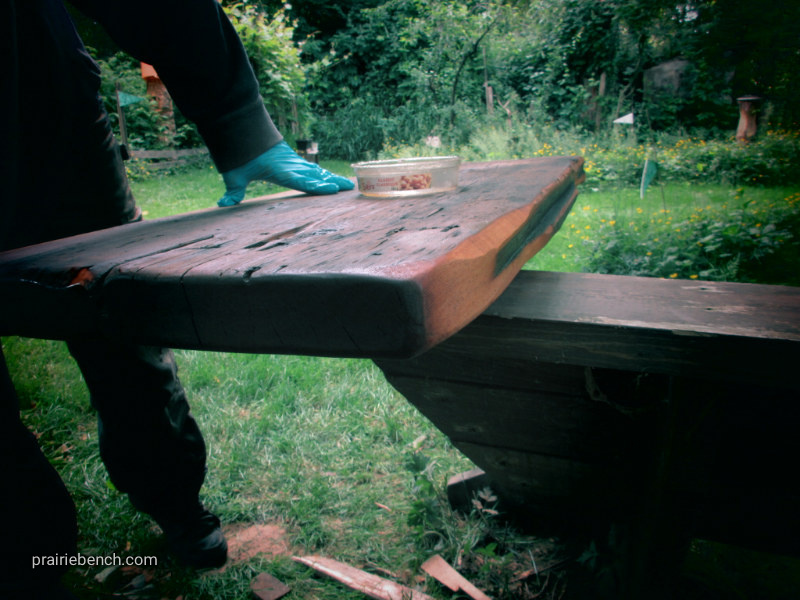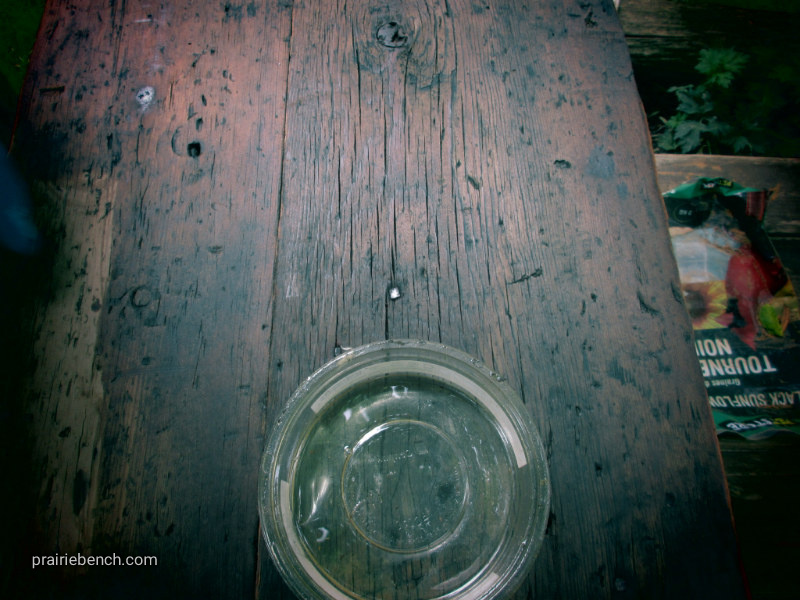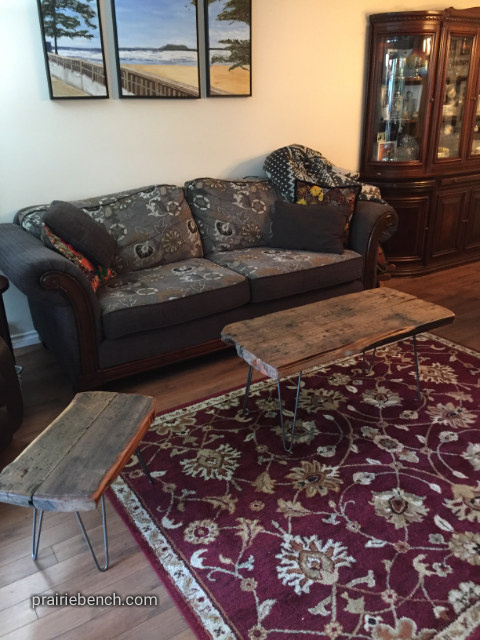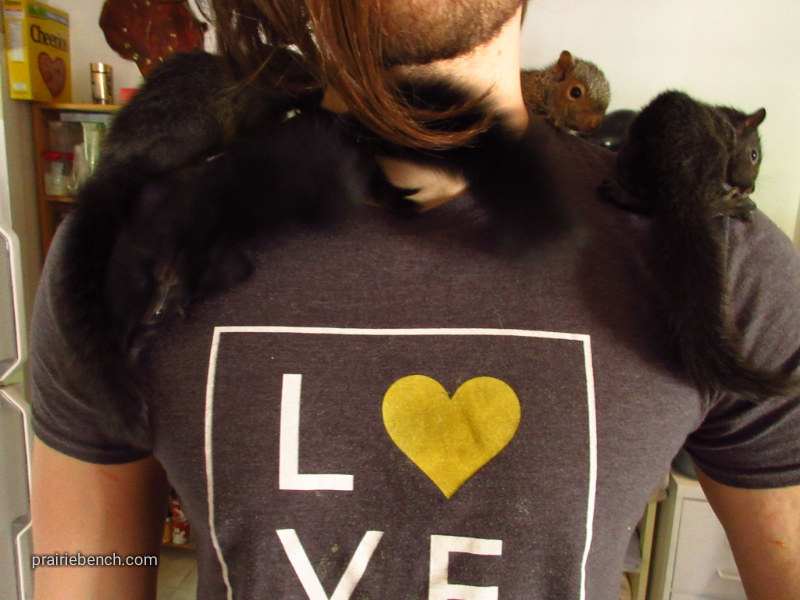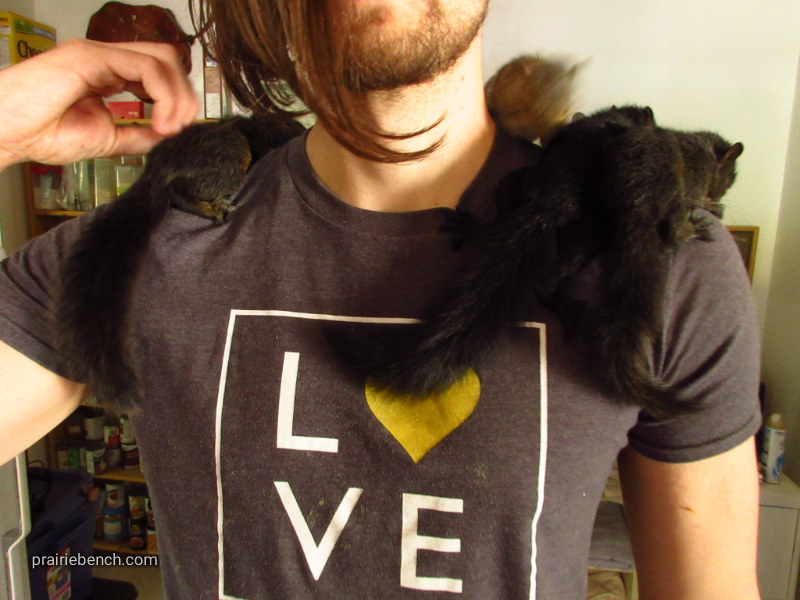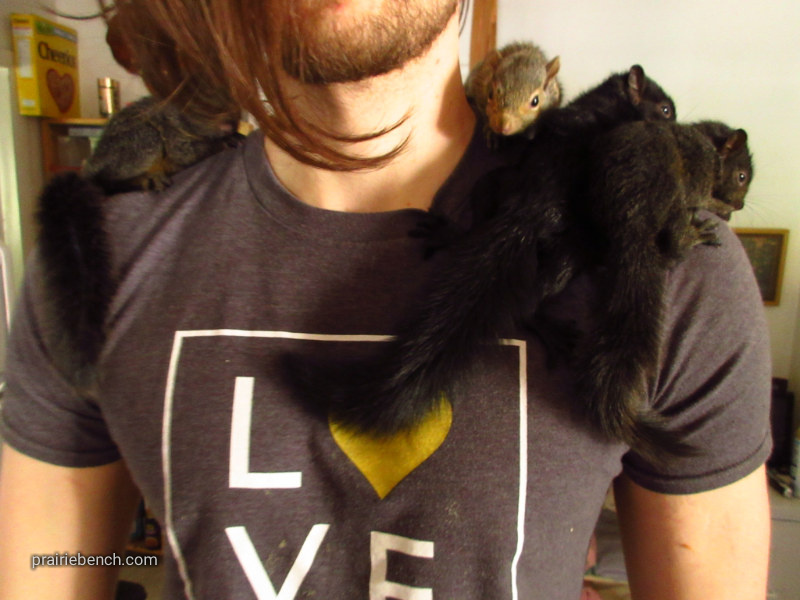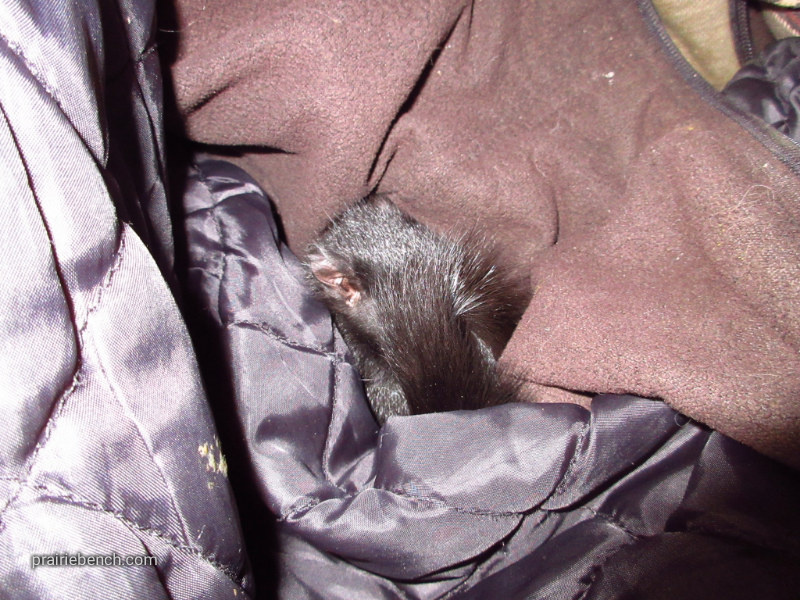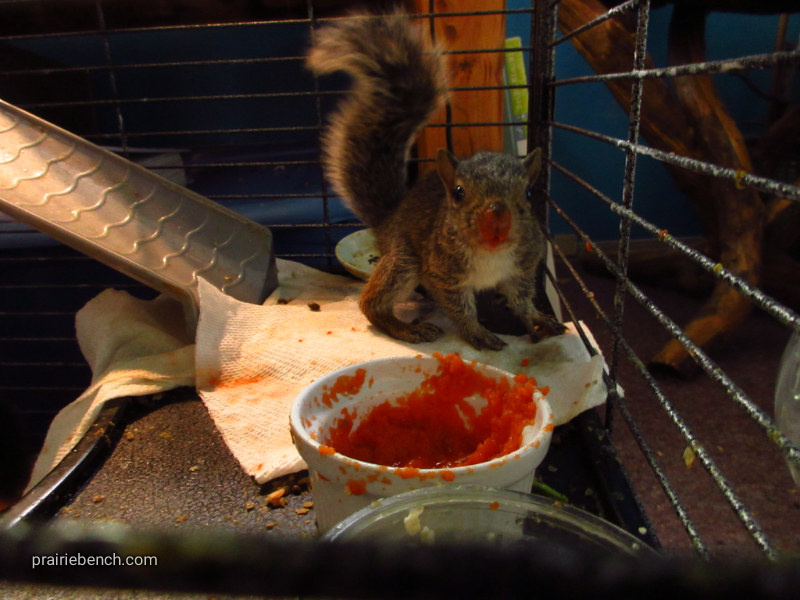
Lots of leftovers? That’s what often happens around the wood shed. It’s Halloween and after a good harvest this KD (kiln dried) bench made of 2×6 ends makes a fine place to set out treats, or put on costumes in the hallway.
.
No nails or screws involved. The legs are cut at 10° and “picture framed” with some left over 2x4s. The surface is a patchwork of boards cut square on the chop saw. The dimensions are 42″ wide, 16.5″ deep, and 18″ tall. To even the surface, a 3.5″ planer was used to give it an old fashion look and feel. Sanding was at 60 grit and the sharp edges were sanded round. The ends of the bench top were planed thinner so the top doesn’t look like lumber.
.
The top is pegged to the frame with eight hardwood dowels. Some artificial aging was added with a fine tip torch. This also highlights some flaws and grain. Because this is construction grade wood, cracks and knots must be ground out or someone sitting on it might get a sliver. Then the bench is coated in a mix of thinner and poly sealer to give it a soft, safe finish. The mix has no gloss and protects the wood with a rubbery durable coat that preserves the touch of real wood.
.
Budget: $0. and the end result is a strong, rustic piece that can serve multiple purposes. The legs and frame were originally made for another project, but didn’t get used. They were test legs, but very strong and can easily hold several people standing on it. The corners of the legs are under the center beam, with a direct transfer of weight through the center and down through all four legs equally.
.

#10-31-19 will host a bowl of candy on a leaf-covered, spooky porch tonight, for the convenience of neighborhood ghouls.
…and for our web visitors, here’s a peek of the fall colors around Prairie Bench…


